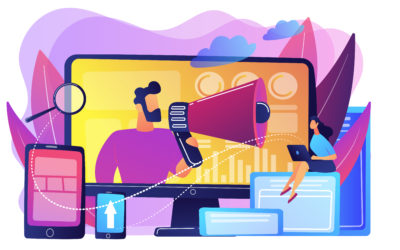
Credit: Pixabay
We are living in a rare moment in the history of communication.
Not since the launch of Morse code, when the speed of messaging moved from months to seconds, has there been such a tectonic shift in the opportunity of our profession.
We don’t have the single source share of audience that came with broadcast television in its heyday. Today, there’s too much fragmentation.
But we do have the ability to be immediately relevant to highly targeted, specific audiences, based on whatever attributes might be most important. Such as the things they care about most; what they find relevant; where they live; or the problems they’re trying to solve.
When you have true knowledge of your audience, combined with great targeting ability and increased speed, you have the opportunity for relevancy, for resonance. Your message can be formed in a manner that cuts through all the noise and speaks to your intended audience in a language they’re not only ready for – but recognize.
The value of audience intelligence
This ability to target your message to the audiences that matter most – at the moment of greatest impact – serves great purpose. Which is why audience intelligence work is so vital.
This work needs to come early in the process – after you’ve established a clear goal, but before you have a plan for exactly what you want to communicate to people.
Audience intelligence informs everything about what you want to do or say from that point onward.
The reason this work matters (and why we value it so highly at the Informed Engagement Network) is because the more you know about the people you’re trying to persuade, the more thoughtfully, and the more credibly, you can speak on their terms.
And ultimately influence their decisions.
What this looks like
Today, working in B2B spaces most commonly, some of the greatest impact we have comes down to effectively understanding and connecting not with the greatest number of people – rather, we’re interested in specific people, or specific groups of people.
We want to know what these people talk about. What they care about. Who else they’re talking to in the space. Where they’re most likely to engage in conversation. We want to understand where, when and how they’re consuming information on related topics.
At i.e. network, we do this in real time in digital and social spaces, with the specific purpose of improving our odds of connecting with a target audience – particularly influencers.
This can be done to a single person, speaking directly to one “Joe Smith.” But you’re more likely to go after all the people who have Joe Smith-like attributes, and larger Joe Smith-like populations.
This knowledge allows you to begin to form real relationships, and should be used not only to help you achieve your own goals, but help your audience achieve theirs.
For example: Sometimes we just want to know what’s trending among a target audience … even if it has nothing to do with what our client may be selling.
Why? Because – and you can miss this reality in the digital, tech-oriented world we’re operating in today – the real value is this relationship.
Your ability to connect and present in an informed and trusted manner hinges on it.
If you’re about educating – about helping your target audience with things they care about – your ability to win in that pursuit is directly proportional to your knowledge of that audience.
What should you do next?
Now that you know so much about this audience of yours … what’s next?
You develop a strategy that speaks to them. On their terms, at the times and in the places they’re seeking help.
You do this in the mediums you know they’re most engaged with.
And you leverage all you can know about the folks who might influence them along the way.

